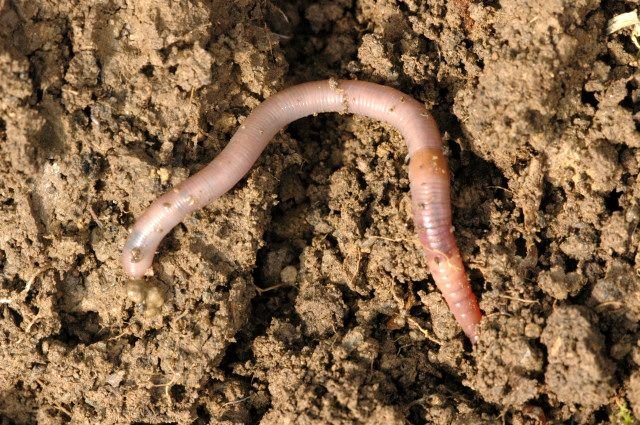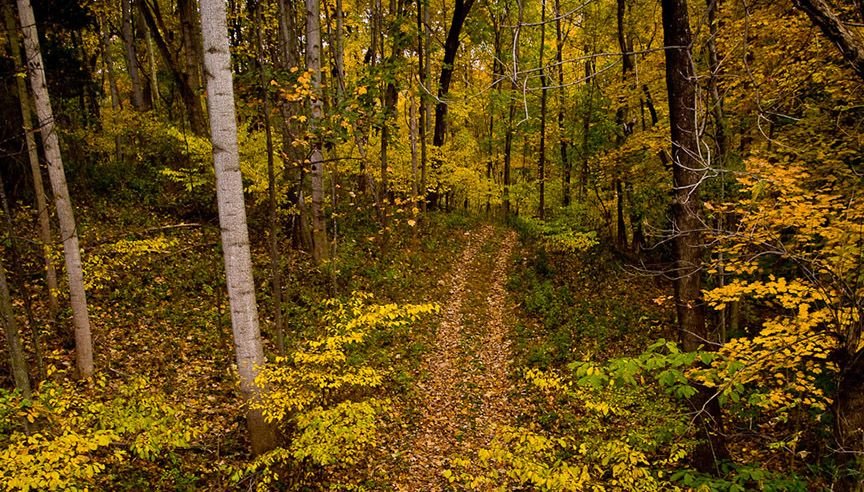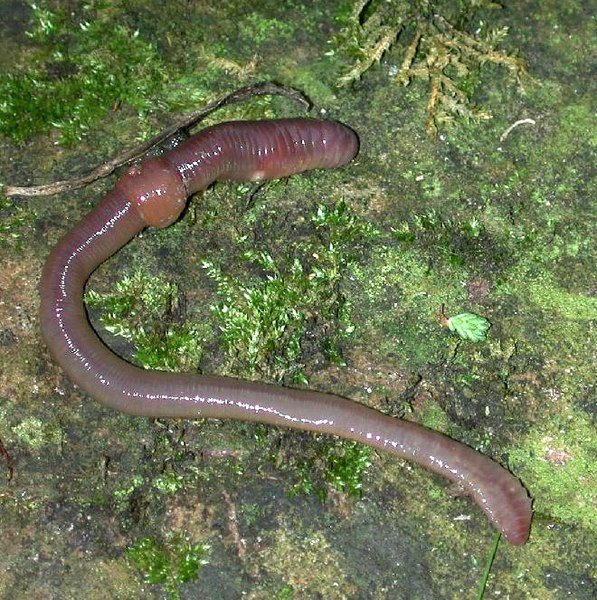There are no earthworms native to the Northeastern United States or the upper Midwest. They were all wiped out in the last Ice Age around 10,000 years ago. (A giant mountain of ice crushing your home might cause you problems too.) These days, though, earthworms are to be found all over the region, and it's because we brought them.

Lumbricus terrestis [Image source]
More specifically, John Rolfe brought them. Yes, John Wolfe, husband of Pocahontas. In the early 1610s, Rolfe was instrumental in introducing the stronger Caribbean strain of tobacco into the Jamestown colony. Tobacco quickly became by far their most important export. When English ships arrived to purchase tobacco, they offloaded ballast to even out the weight. That ballast consisted of stones and dirt from England, which contained English earthworms. Other earthworms from around the world were also brought over in the root balls of plants in the horticultural trade.
The troubles of Jamestown are well documented- three out of every four early Jamestown colonists died. The massive amounts of tobacco they planted destroyed the soil- few plants are as lethal to soil as tobacco. But it was the plants, animals, and diseases that they introduced that really changed the face of North America. Bees, for instance, are responsible for allowing European plants to prosper. Most pollinating insects just have a few flowers they prefer. The European honeybee, however, will pollinate any flower it comes across. This transfer of invasive species across the Atlantic became known as the Colombian Exchange.
Let's get back to our little burrowing earthworm friends, though. You've probably heard that they're great for gardens- and most of the time, they are. It turns out, however, that they're actually quite bad for North American native forests.

Eastern deciduous forest. [Image source]
Current research is indicating that they're damaging native North American ecosystems, especially temperate forests, in several ways. The trees, shrubs, and other plants of North American temperate forests evolved to gain their nutrients from thick layers of decaying organic detritus- leaves, twigs, etc. Earthworms get to those nutrients first, converting them into soil quicker, allowing those nutrients to be leached out of the soil by rain and groundwater movement faster than they normally would be. Young plants with shallow roots then have more trouble taking off. This has had the effect of lowering the biodiversity of American temperate forests. The loss of the thick organic detritus layer can also make the soil more vulnerable to erosion. On top of that, they're releasing not insignificant amounts of carbon into the air!
There's not a lot that can be done to slow the spread of earthworms- they're underground, so you can't really poison them without poisoning the land. They certainly can't be hunted, and nothing hunts them in large enough numbers to control their populations. When you see an earthworm in North America, you're almost certainly seeing an invasive European or Asian earthworm- the native ones are rarely seen. The best strategies we've found it attempting to prevent fishermen from using them as bait and removing invasive shrubs whose root systems they enjoy.
Invasive species are often overlooked in favor of bigger, flashier environmental problems like climate change, deforestation, and pollution. They're by far one of the most damaging and lasting problems we've caused on the planet, however. There are countless examples of invasive species we've introduced wrecking environments. Housecats driving songbird species extinct. Rabbits wreaking havoc across Australia. Zebra mussels in the Great Lakes. Rats eating lizard eggs. Unlike many other environmental problems, where the damage we produce is a direct result of our actions, once an invasive species takes hold, it self-perpetuates. The problem just starts snowballing until it's out of control.
When thinking about environmental issues like invasive species, however, it's extremely important to remember that no environmental issues exist in a vacuum. They all interrelate and effect one another. Earthworms are producing more atmospheric carbon dioxide, exacerbating climate change- which, in turn, extends the area in which earthworms can comfortably survive. We have to address environmental problems both specifically and as part of a cohesive, interrelating system. Our civilization does not exist separately from nature. Even the most concrete-locked city dweller is inextricably a part of the global ecosystem. We will not survive unless we stop acting like we're above the natural world.
Bibliography:
http://charlesmann.org/articles/NatGeo-Jamestown-05-07-1.htm
https://en.wikipedia.org/wiki/Invasive_earthworms_of_North_America
http://www.npr.org/templates/story/story.php?storyId=9105956

